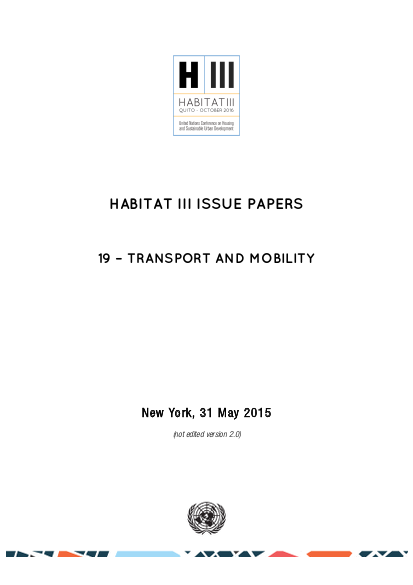
While transport is an enabler of economic activity and social connectivity, a bias towards planning for individual motorised transport rather than accessibility has led to increasing passenger kilometers travelled per capita and a vicious cycle where in an effort to address congestion, the increasing numbers of private motorised vehicles are sought to be accommodated by building more and more roads and infrastructure such as flyovers, which in turn are soon overwhelmed by the rise in the numbers of vehicles. The objective should rather be to curb sprawl, create compact, walkable neighborhoods and reduce the vehicle kilometers travelled per capita. Urban form is a key determinant of transport systems and in turn is heavily influenced by transport systems. A compact city form enables people, particularly the poor to access jobs, educational and health services more easily, reduces fuel consumption and provides more opportunities for social interaction.
This issue paper on "Transport and Mobility" is part of a series of thematic reports offering a comprehensive, expert-level view of the processes of urbanisation that characterise today’s century of cities — and look forward to what could and should come next. The 22 “issue papers” were submitted by a range of multilateral institutions. They will ultimately be used to guide discussion by 10 formal “policy units”, which will focus on the six thematic issues deemed important for the Habitat III process. Made up of independent experts, these units touch on housing, resilience, equity and other issues. Eventually, they will each provide formal input regarding the crafting and, especially, implementation of the New Urban Agenda.
Links
Resource collections
- UN Habitat - Urban Response Collection
- Urban Response - Urban Crisis Preparedness and Risk Reduction
- Urban Response Collection - Community Engagement and Social Cohesion
- Urban Response Collection - Economic Recovery
- Urban Response Collection - Environment and Climate Change
- Urban Response Collection - Housing, Land and Property
- Urban Response Collection - Urban Crisis Response, Recovery and Reconstruction
- Urban Response Collection - Urban Resilience